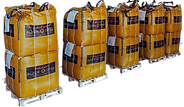
Indocarb, indocarb activated carbon, indocarb ac llc, coconut activated carbon, indocarb pittsburgh, activated charcoal



MANUFACTURING

Our coconut activated carbon facility in India is the largest in the region with annual production capacity of 50 million pounds of carbon. BO group factories pursues uncompromising quality standards in all the stages of its process and operation activities. For this a meticulous quality control program is operated throughout the entire process from the selection of the raw material to the final quality assurance prior to shipment. Our craving for uncompromising quality starts at the selection of raw material itself. Charcoal is sourced from selected outlets after rigorous quality inspections. Our factories employ state-of-the-art equipment and technology and supported by highly qualified and skilled technicians, 'no-compromise' quality control is their top priority. Specially designed crushing and screening machines assure a great degree of control over particle size to precisely meet the application-specific mesh size range requirements of our customers. Quality of IndoCarb brand coconut carbon products has been extensively tested and acclaimed by all major industry leaders and various reputed laboratories around the world.
Method: Steam Activation
Steam activated carbons are produced in a two-stage process. Firstly the coconut shells in the form of lumps, is carbonized to convert coconut shells to char or charcoal by a process called pyrolysis, which is the chemical decomposition of the shell by heating in the absence of oxygen. For this stage temperatures usually do not exceed 700°C. Carbonization reduces the volatile content of the source material to less than 20% creating a carbonaceous mass full of tiny pores.
In the second stage, this carbonized base material is activated at high temperature (1,100°C/2,012°F) in steam. The chemical reaction between the carbon and steam takes place at the internal surface of the carbon, removing carbon from the pore walls and thereby enlarging the pores. The steam activation process allows the pore size to be readily altered and carbons can be produced to suit specific end-sues. For an example, the pore structure has to be opened up more for the adsorption of small molecules from a solution, as in water purification, than for the adsorption of large color molecules in sugar decolorization. Activation temperature and the amount of activation time are important to create the internal pore networks and to impart certain surface chemistries inside each particle. In essence, the total activation process gives carbon its unique adsorption characteristics.
Output from the rotary kiln is further processed in the postproduction plant where it is crushed and screened to different sizes and to remove fines and dust to meet the specifications for granular activated carbons. To produce powdered activated carbons, the carbon granules are further ground using a gentle pulverizing action.

